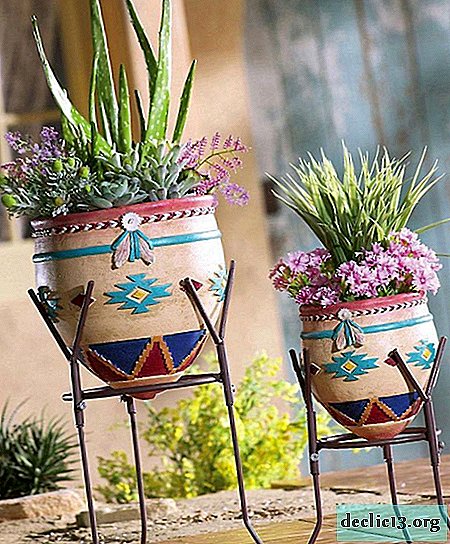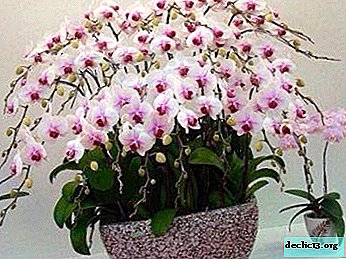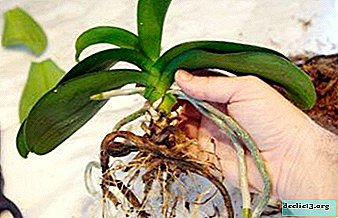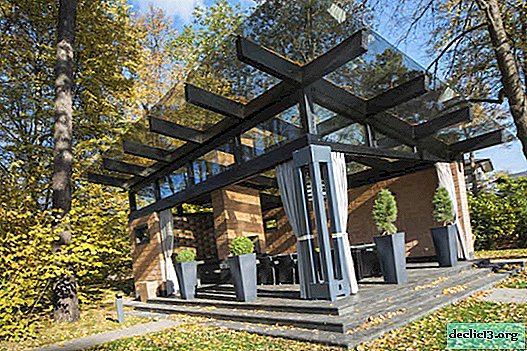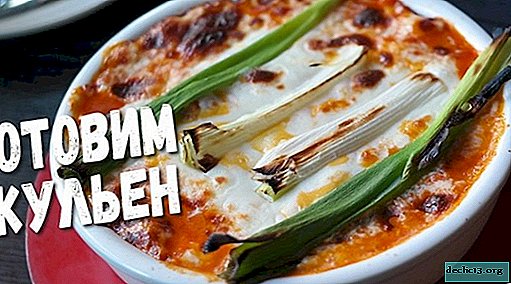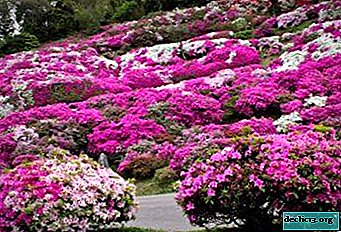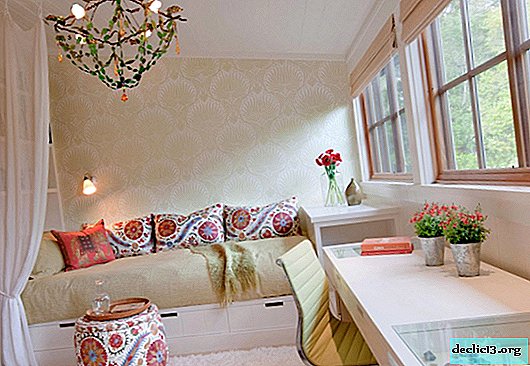Features of growing Alan spathiphyllum
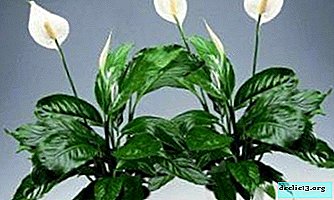
Spathiphyllum Alana is a decorative culture that attracts with bright foliage and delicate flowering. You can grow a plant both in a room, on a balcony and in an office.
It does not require special attention in terms of care, while giving others a pleasant aroma. In this article, we will try to consider in detail the appearance, history of occurrence, as well as how this plant propagates and how to properly care for it at home.
Description
This plant belongs to the Aroid family. Grows in the tropics. A distinctive feature of this culture in the absence of a stem.
Appearance
The plant grows up to 50 cm. Its foliage is dense, the surface is glossy. Alan variety is distinguished by bract color. The white blanket has a convex vein on the inside. It is colored green, starting from the growth and bloom of the flower. As it blooms, the greens go over the entire surface of the bract.
Photo
Next, you can see a photo of the plant:




History of occurrence
The flower was first discovered and described by the German botanist Gustav Wallis in the 19th century.. Then the plant was brought to Colombia and Europe. The flower immediately gained popularity among flower growers, who began to carry out numerous selection works, as a result of which the Alan variety was obtained.
What is the difference from the rest of the species?
The main difference between the Alan species is foliage. Compared with other varieties of spathiphyllum, it is directed upwards.
Bloom
When and how?
The flowers are presented in the form of an inflorescence-cob, which is enveloped in a delicate coverlet. Flowering begins in the spring, and it lasts for 2-3 weeks. Providing the necessary conditions, the plant blooms 2 times a year.
Conditions before and after
During the flowering period, the plant should be abundantly watered with settled water in order to prevent the drying of an earthen coma. Add top dressing every 2 weeks. Apply formulations with a high concentration of phosphorus and potassium. Remove all faded buds. After flowering, trim the bush, reduce fertilizer application and reduce watering.
What if the buds do not appear?
The main reason for the lack of flowering is improper care, or rather, low temperature, humidity, lack of nutrients.
To correct the situation, you need to follow these recommendations:
 Provide suitable temperature and humidity.
Provide suitable temperature and humidity.- Increase fertilizer dosage.
- For transplanting plants after purchase, do not use too much capacity.
As you can see, just a few simple conditions that you need to adhere to without difficulty will pre-warn an unpleasant opportunity, the lack of buds of this beautiful plant. Of course, it is worth considering that not only these factors can affect the fact that the flower does not open buds, which we will discuss below.
Home Care
Seat selection
Grow the plant in partial shade, in places where diffused light is present. On the windowsill, where there is direct sunlight, the leaves will get burned, and their growth will slow down.
The soil
Peat and leafy land, combined with humus and sand in the following proportion: 1: 1: 1: 0.5, is suitable for growing Alan spathiphyllum. It is possible to give the soil friability with the help of crushed bark of trees.
Planting
When the container and substrate were prepared, the planting material is installed in the ground, and then a mini-greenhouse is heated with heating (up to 24 degrees). If the humidity level is exceeded, then mold will form on the surface of the earth, and the planting material will die.
Temperature
Spathiphyllum Alana - a thermophilic plant. In summer, the temperature will be 20-23 degrees, although the flower tolerates hotter conditions - 26-27 degrees. In winter, the culture will fully develop only if the temperature regime is 15-17 degrees.
Attention! Spathiphyllum Alana reacts negatively to drafts and may die.Watering
 For hydration, soft and settled water is suitable. Water immediately after the topsoil dries. If irrigation is not regular, then the leaves will turn yellow.
For hydration, soft and settled water is suitable. Water immediately after the topsoil dries. If irrigation is not regular, then the leaves will turn yellow.
But you can not transfuse the flower, as this will lead to rotting of the root system and death of the plant. Very often, the owners of spathiphyllum, precisely because of these two opposite errors in courtship, create an uncomfortable and even dangerous habitat for him. Do not forget that the plant is very sensitive to moisture differences in the soil.
Top dressing
Use mineral fertilizing during the growing season - in the spring. Dilute 1 g of the drug in 1 liter of water. Next time, top dressing should be applied in the summer and during the formation of buds. Add young plants once a week, and adults - once a month. In winter, do not add nutritional compounds.
Pruning
This procedure is mandatory for the plant, otherwise it will begin to hurt and die. Cropping Features:
- Remove dry and old leaves.
- Also cut off the dried ends of the leaves so that the pathological process does not spread further.
- Trim the peduncles on which the flower has bloomed. This will be an incentive for new flowering.
Transfer
The development of the root system of the flower occurs quickly, while it completely fills the space of the container. So that perform a transplant once a year, preferably in spring. The pot should be larger than the previous one. It should also be wide, but not very deep.
To transplant Alan's spathiphyllum by transshipment of an earthen coma. This will prevent trauma to the roots, and the plant will take root better.
If spastiphyllum is older than 5 years, then a transplant should not be performed.Breeding
Rhizome division
This method is very common and useful for the mother plant. The resulting delenki is a ready-made material for planting, which does not require special procedures. They are enough to just plant in a pot. And here, How to plant a flower, the following instruction will help:
 Carry out the procedure at a temperature of 20 degrees.
Carry out the procedure at a temperature of 20 degrees.- Before removing the flower from the pot, water it carefully. Then the roots are saturated with water and will be less brittle.
- Remove dried or rotted roots, sluggish leaves from a separate plant.
- A small pot with a diameter of 15 cm is suitable for transplanting.
As you can see, observing only four points, you will be able to multiply the plant by the required number of seedlings without any problems.
Cuttings
As a planting material, a leaf rosette cut from the mother plant is used.. Place the shank in a container with water for 2-3 weeks, until roots are formed. Stem decay can be prevented if activated carbon is added to the water (half a tablet per 200 ml of water). When the roots grow by 2-3 cm, plant the plant in the ground.
Diseases and Pests
Of the pests, the following insects are dangerous:
- Spider mite. It focuses on the inside of the leaf, which is processed by a cobweb. After a while, the leaves dry. To combat, a soap solution is used, only before that the sheet plate is cleaned of cobwebs. Onion broth will also help, for the preparation of which take 100 g of raw materials and 5 liters of water.
- Aphid. It can be green, black or gray. Located on the inside of the leaves. As a result, they dry and curl. To combat, use a solution of nicotine sulfate (1 g of the drug per 1 liter of water).
- Shield. She covers the leaves with dark spots. Treat the culture with a soapy solution with the addition of tobacco and kerosene. Wash the plant further with soapy water and insecticides.
Bacterial and viral diseases can affect the plant. In case of severe damage, throw the flower.
Prevention of various problems
When growing a plant, the following problems are possible:
- Leaves turn yellow and fade. The main reason is the drying of the soil in the pot. To restore the plant to life will help frequent watering.
- Drying leaf tips. The main reasons: landing in an inappropriate container, direct sunlight, a sharp temperature drop, low humidity. To prevent the development of such a problem will help proper care of the culture.
- Blackening of the leaves. The main reason for the development of the problem is an excess of moisture, which leads to rotting of the roots. To save the plant, remove it from the pot, inspect it and remove the damaged roots. Transplant a flower into another soil. If the blackening of the leaves arose as a result of a lack of nutrients, then you need to make complex fertilizers with a high concentration of nitrogen.
Spathiphyllum Alana is a common type of decorative culture, which is distinguished by its attractive appearance and unpretentiousness in care. But to prevent the development of various problems will allow the observance of all agrotechnical conditions and timely prevention of plants.

 Provide suitable temperature and humidity.
Provide suitable temperature and humidity. Carry out the procedure at a temperature of 20 degrees.
Carry out the procedure at a temperature of 20 degrees.
